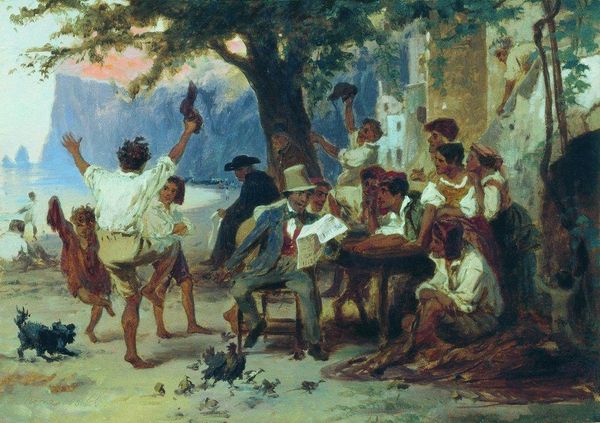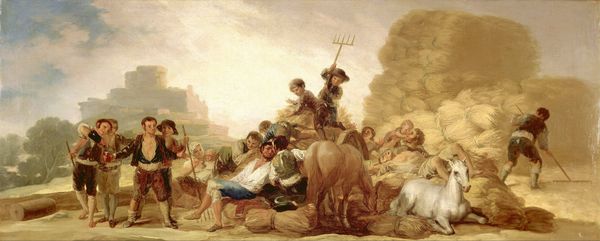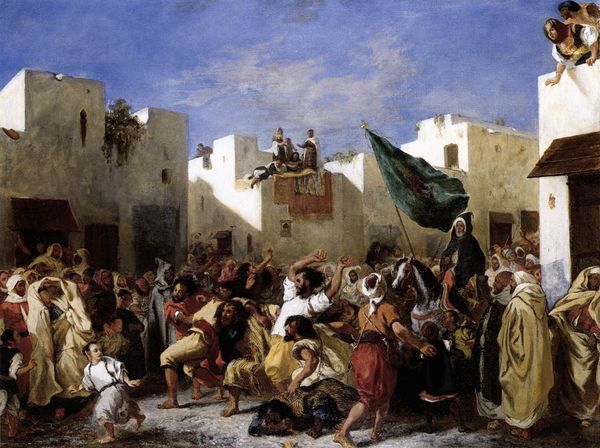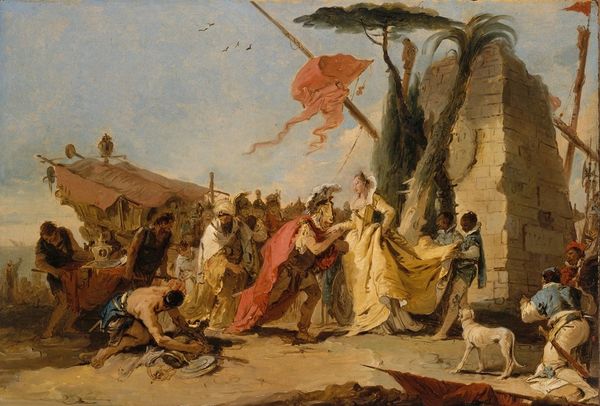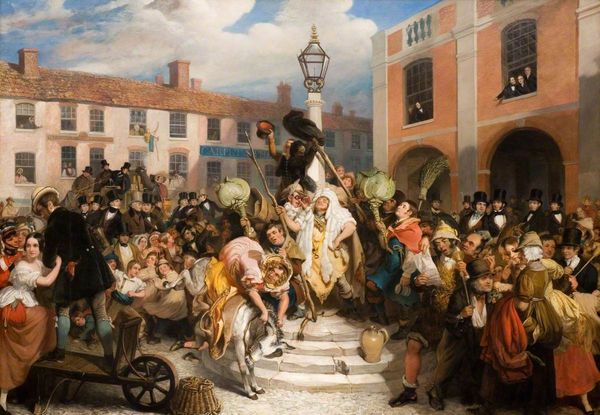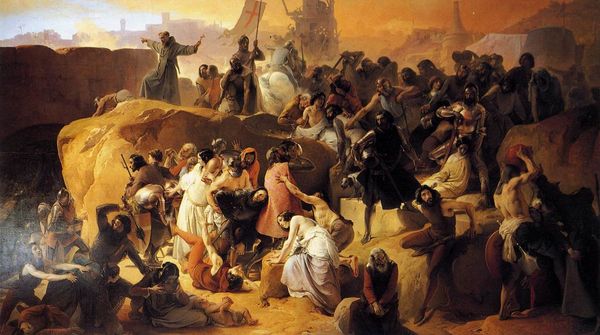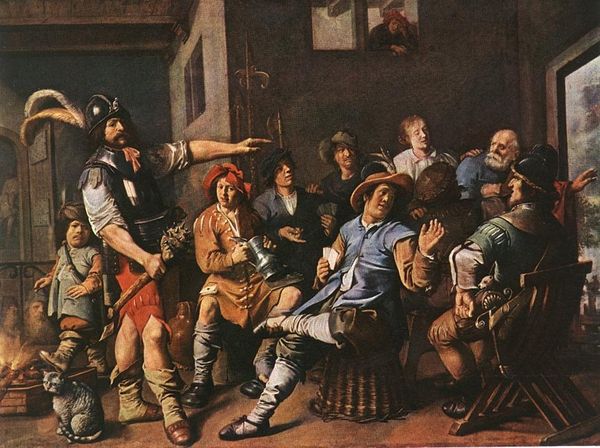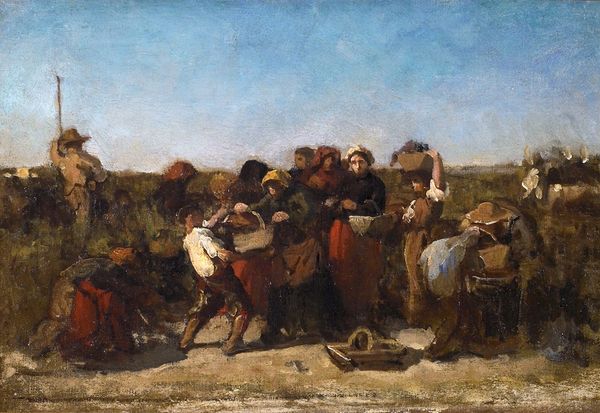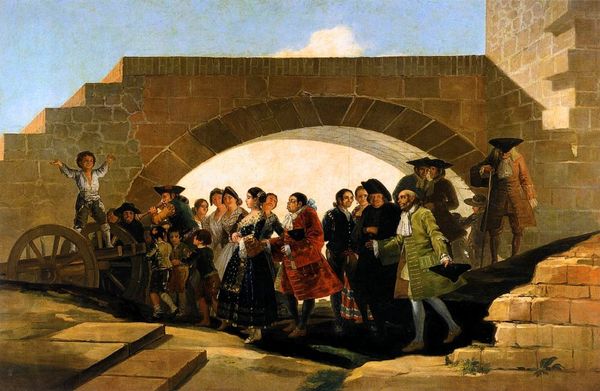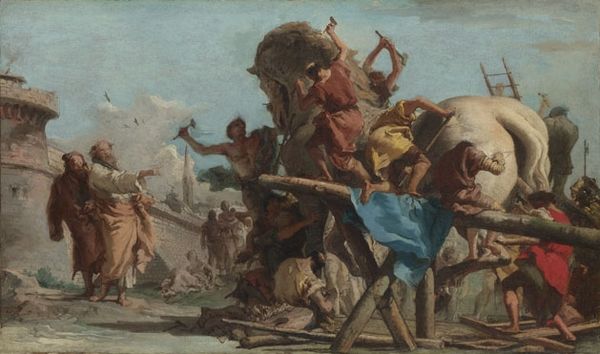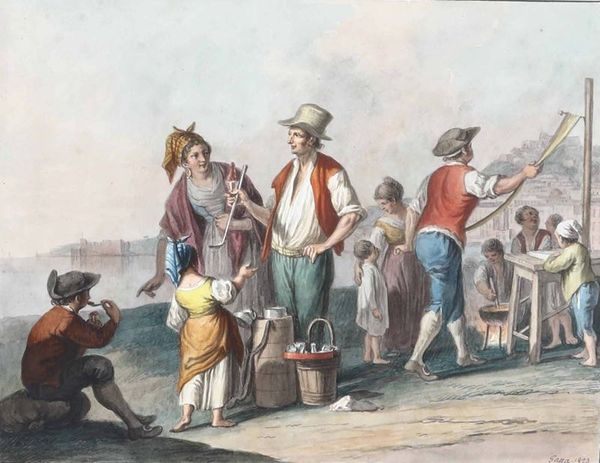
German Artists Make Their Sketches in Rome 1848
0:00
0:00
wilhelmvonkaulbach
Neue Pinakothek, Munich, Germany
painting, oil-paint
#
gouache
#
painting
#
oil-paint
#
figuration
#
oil painting
#
group-portraits
#
romanticism
#
genre-painting
#
history-painting
#
watercolor
Copyright: Public domain
Curator: This is "German Artists Make Their Sketches in Rome" created in 1848 by Wilhelm von Kaulbach, using oil paint on canvas. Editor: It’s incredibly busy, isn't it? A real contrast between a somber, almost biblical scene on the left, and sheer bacchanalian revelry on the right. It almost feels staged, the way they’re arranged. Curator: Staged or rather deliberately constructed. This work encapsulates a key moment in the relationship between German artists and Rome. At a time when German national identity was being formulated, Rome represented a classical ideal, a site of artistic pilgrimage. Editor: You can certainly feel the pull of those traditions here. Look at the emphasis on figures and idealized forms. Is Kaulbach positioning these German artists as inheritors of the classical tradition? Curator: Precisely. The image is a historical genre painting that carefully situates German Romantic artists within that lineage, and critiques their engagement in contemporary identity formations. Consider the role of Romanticism in fostering national sentiment in this era, as people constructed narratives for self-definition. The dancing peasants offer a clear contrast to the artists studying ancient artifacts in the center. Editor: Right. And those classical ruins aren’t just backdrop – they are signifiers of a complex history and cultural inheritance. The composition pulls us between the act of witnessing tradition on the left, to a self-consciously playful contemporary spin to it on the right. I keep coming back to the dancing figures - almost Bacchic or Dionysian. Is that meant to be a direct tie to those traditions? Curator: Precisely so, note that Kaulbach includes the ancient Roman god, Bacchus. The German artists become a modern-day interpretation and reimagining of these ancient archetypes, with each dancing figure taking the traditional attributes associated with those figures. In the process of representation, Kaulbach highlights not only continuity but also questions the complex relationships between social class, identity and place in 19th-century European culture. Editor: So much detail! It reveals layers of meaning—a staged drama about cultural identity and artistic heritage. I feel I could look at it for hours and still discover new things. Curator: Yes, and understanding Kaulbach’s socio-historical placement allows for insight to question cultural hegemonies in an exciting way.
Comments
No comments
Be the first to comment and join the conversation on the ultimate creative platform.
